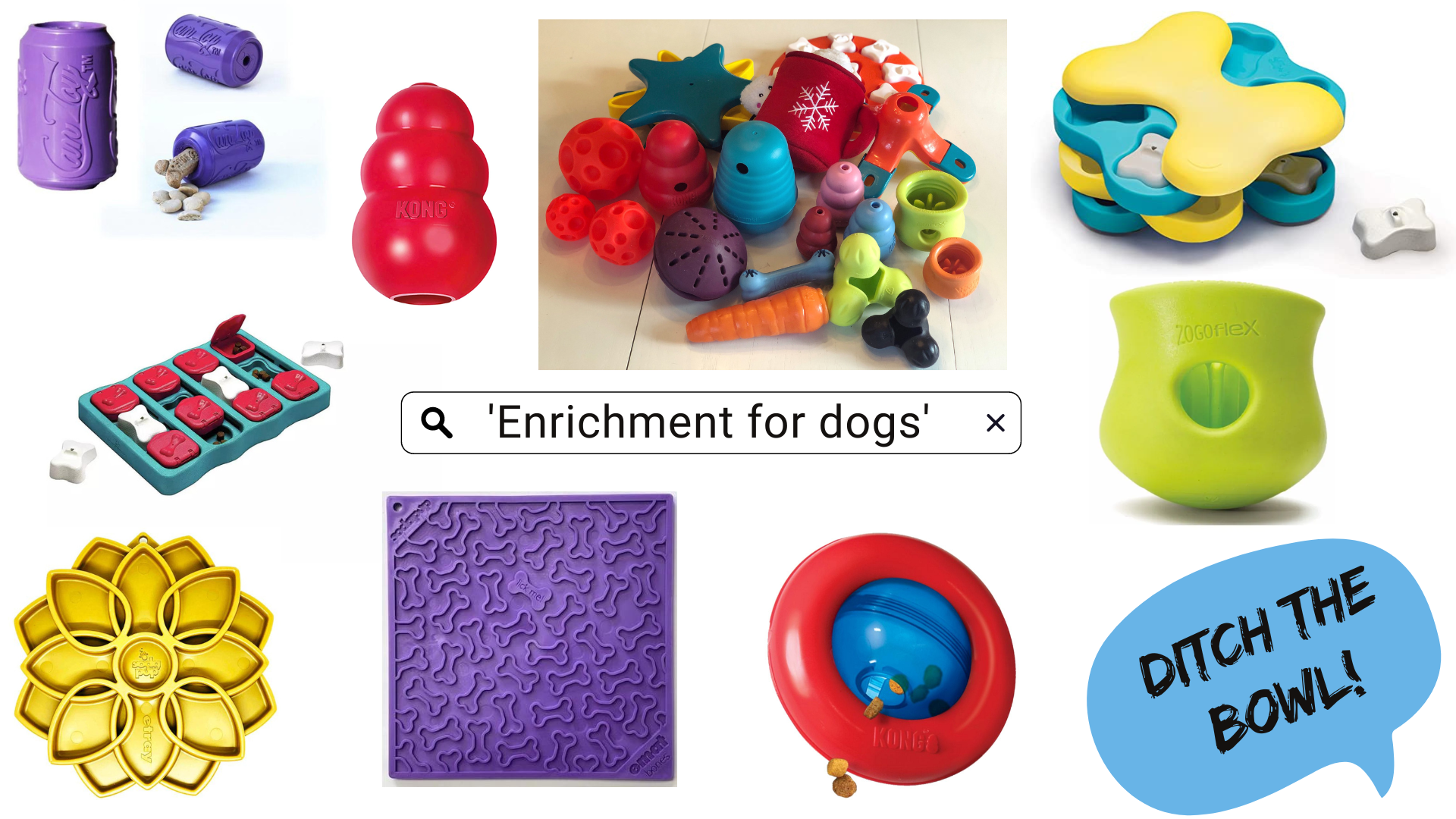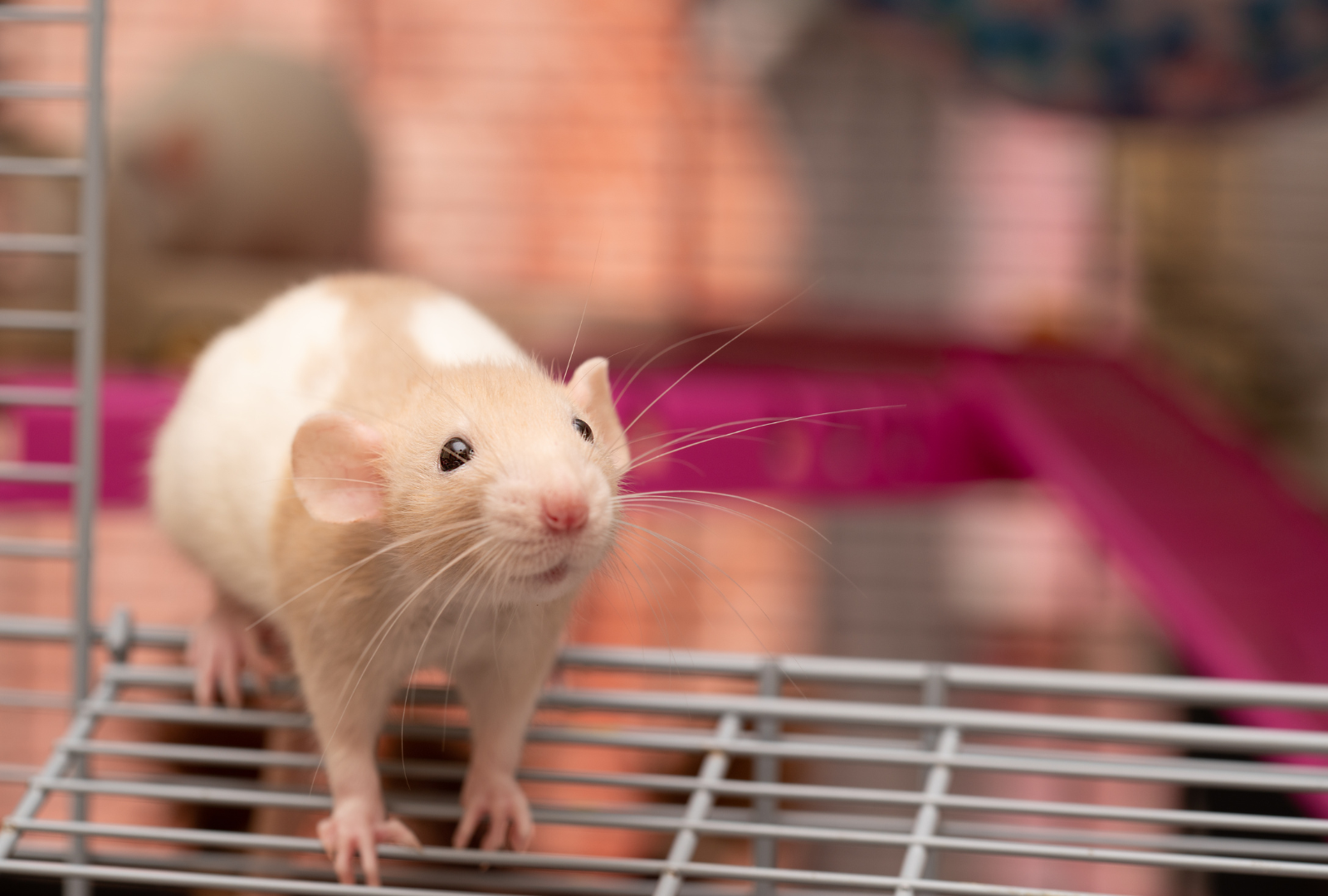Beyond the Slow Feeder: A Truly Enriching Enrichment Strategy
Dogs have been our faithful companions for thousands of years, providing us with unwavering loyalty, unconditional love, and constant companionship. As our understanding of canine behaviour and psychology has advanced, we've come to realise that dogs need more than just food, shelter, and exercise to thrive.
Canine enrichment, the practice of providing dogs with opportunities to engage in natural behaviours and activities, has become increasingly popular among dog owners in recent years. This approach aims to enhance dogs' overall well-being by giving them outlets for their instincts and desires, such as exploring, scavenging, and problem-solving.
In this article, we'll explore the reasons behind the growing interest in canine enrichment, .
Whether you're a seasoned dog owner or getting a dog for the first time, knowing the importance of canine enrichment and understanding the various types of enrichment activities available for dogs can help you provide your four-legged companion with the best possible quality of life.
It's a word we hear all the time - but what is enrichment, and what is it not?
If you do a quick Google search, this is what you’re likely to find. . .
Google will show you a dazzling array of Kong toys, Toppls, Lickimats and other assorted colourful rubber, plastic or wooden objects designed for food acquisition.
Yet enrichment is SO much more than the food puzzles and treat dispensers touted by pet stores that have become lazy shorthand for a concept that has so much more to offer our dogs.
On a recent Club Dogwood masterclass, Scentventure Guide Emily dived deep into this topic and encouraged us to think more carefully about if and how the experiences we provide our dogs are truly enriching, and how best to approach your dog's enrichment strategy.
Why all the ‘canine enrichment’ food puzzles?
A 1960s study* showed that lab mice preferred to work for their food when given a choice between pushing a bar for food, and freely available food. This phenomenon is referred to as ‘contrafreeloading’. The study has been attempted to be replicated numerous times since then with very varied results, but from there, the ‘nothing in life is free’ school of thought gained popularity which recommended dogs had to ‘work’ for all of their food. Then we had the ‘ditch the bowl’ movement, which encourages pet dog owners to feed all of their dogs’ meals from something other than a bowl.
This has served pet product manufacturers and pet stores well, but has it actually been any good for our dogs?
In some cases, yes. Dogs who inhale their food may need to slow down for health reasons. Though this is not ‘enrichment’; it’s a feeding strategy for safety so it’s not relevant here.
There are some brilliant puzzles/dispensers/feeders on the market, and some even better ones that we can make ourselves.
Food enrichment is just one piece of the puzzle though - pardon the pun. Let’s look at what else is involved.
TRULY ENRICHING CANINE ENRICHMENT
A well-rounded enrichment strategy should also include:
Each of the senses: stimulate all the senses including taste, sight, sound, smell, touch, equilibrioception and proprioception
Environmental: to maximise exploration and activity
Cognitive/Tactile: Use paws/mouth for investigation or exploratory play and problem solving.
Social: Interaction with other animals - same or different species.
In a nutshell, canine enrichment should increase species-specific behaviours that our pet dogs may not necessarily get to fully or frequently experience in a domestic setting.
What enrichment is not
Purely about food acquisition
Difficult or frustrating
You’ll know if it is too difficult or frustrating because you’re likely to see:
Decreased motivation - they leave food behind in the feeder/puzzle/dispenser
Damage to the feeder/puzzle/dispenser - often due to chewing
Frantic approach to the task - like a bull in a china shop
Vocalisations
Looking at you to ask for help
What’s the problem with frustration?
Besides the negative emotional experience for our dogs (we wouldn’t like being hungry and handed a tin of tuna with a small hole in the top so we can get some tuna but not all of it and we have to spend time searching for a tin opener - are you feeling ‘hangry’ yet? I sure am). Besides the ethical implication of making a hungry animal work for their food, it could affect their behvaiour, which in turn could affect our own stress levels.
When food acquisition is difficult, dogs experience a ‘dopamine drop’ which is linked to behaviour changes (mood, sleep, learning, focus) and physical functions like heart rate and pain perception. These are all the things that we absolutely don’t want to mess with if we want calm canine behaviour and stress free walks - especially if we have a dog who is prone to frustration anyway, as is often the case with our reactive and easily-distracted dogs.
On the reverse of this you might be one of the people whose dog solves puzzles easily, in which case the puzzle ceases to become enriching with multiple uses… which is a real bummer if you’ve just forked out money for it.
So is it time for a ‘ditch the slow feeder’ movement?
Not exactly.
Treat dispensers, food puzzles and slow feeders still have a place in a well-rounded enrichment programme, as long as we know that they are just one small part of it.
With so much to gain, let’s look at some solutions.
Solutions
1. The first thing to do if you want to provide true canine enrichment for your dog is to move away from the idea that ‘enrichment’ is food acquisition alone, to that idea that enrichment needs to stimulate all of the senses including taste, sight, sound, smell, touch, equilibrioception and proprioception.
2. Maximise opportunities for exploration, provide achievable puzzles to solve and keep those puzzles varied, and provide opportunities for social interaction with other animals of the same or different species (when safe to do so).
3. Keep in mind the 3Cs of enrichment:
Choice: allowing the animal control over their environment
Change: introducing variety to prevent boredom and frustration
Create: opportunities to perform species-specific behaviours
4. Book a session at an Enriched Environment! At Dogwood Adventure Play we have two secure fields for private hire, both specially designed as an ‘enriched environment’ for your dog - so you can tick off all the boxes of canine enrichment in one visit. There’s equipment for equilibrioception and proprioception, things to see, things to hear and sniffs galore - don’t forget your treats for the ‘taste’ sense!
5. If you want to go even deeper, we have fully integrated enrichment strategies for all our members’ dogs inside Club Dogwood, our online training community. There’s a tonne of quick and simple-to-set-up enrichment activities that are always varied and novel. The membership also hosts online masterclasses every month where we dive deep into subjects like canine enrichment, to address common misconceptions we have about the dogs we live with and how best to provide a full and rewarding life for them - whilst making our own lives easier!
A well-rounded enrichment strategy can help to prevent behaviour problems, improve overall health and wellbeing, and strengthen the partnership we have with our dogs by providing stimulating cognitive challenges, alleviating boredom, encouraging activity and movement, offering opportunity to make choices, improving outlook to novelty, building confidence and providing positive experiences which can improve mood and behaviour e.g. sleep, pain perception, impulsivity, as well as improving physical health through increased sniffing, movement and varied diet.
*Jensen, Glen D. (1963-05-01). "Preference for bar pressing over "freeloading" as a function of number of rewarded presses". Journal of Experimental Psychology. 65 (5): 451–454.





